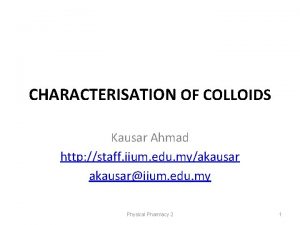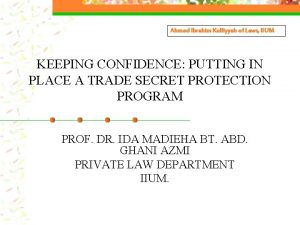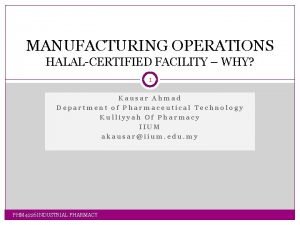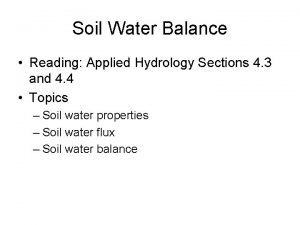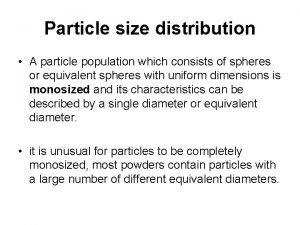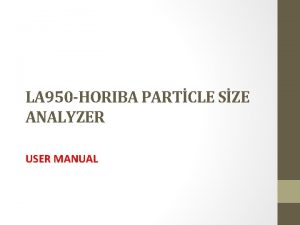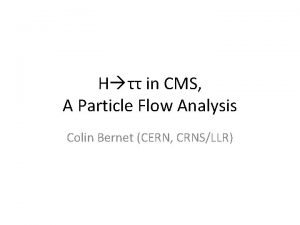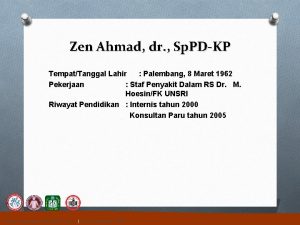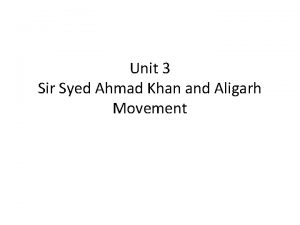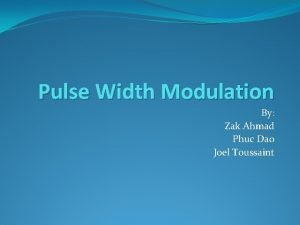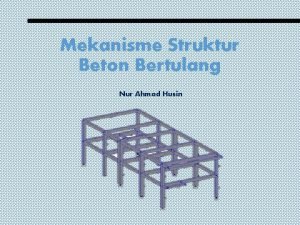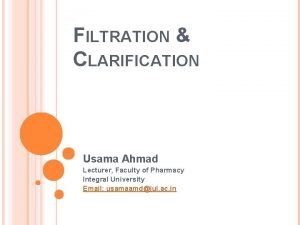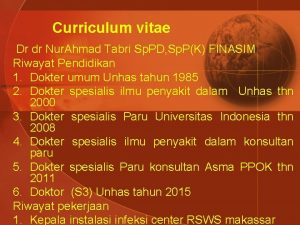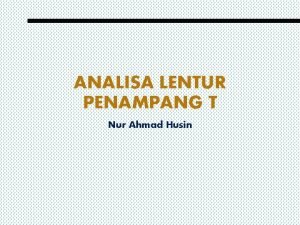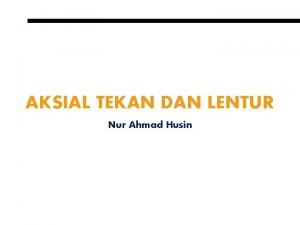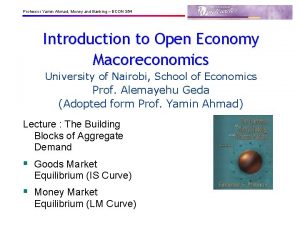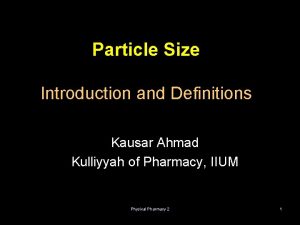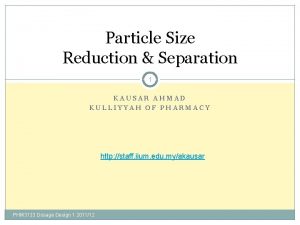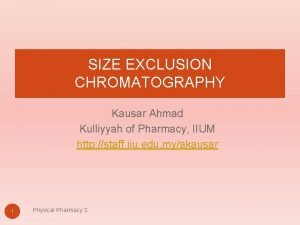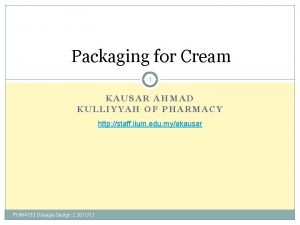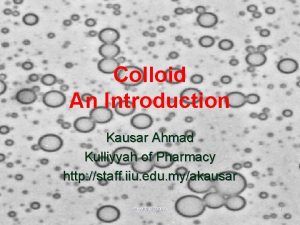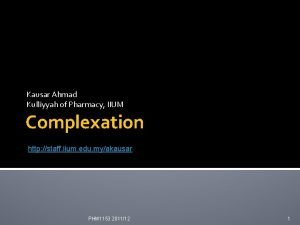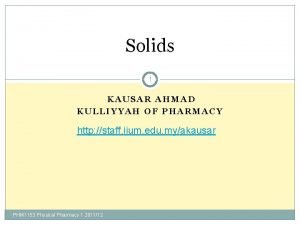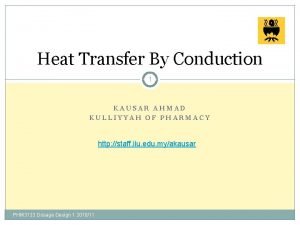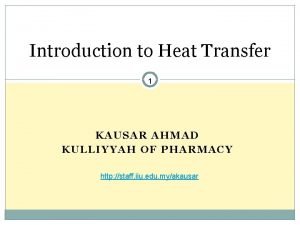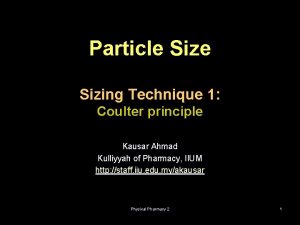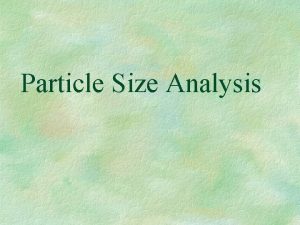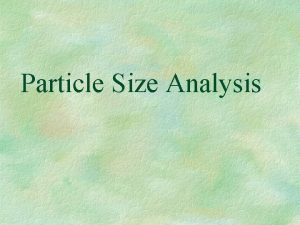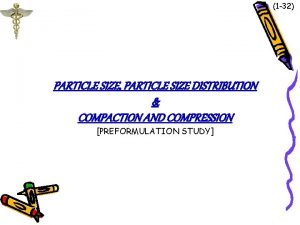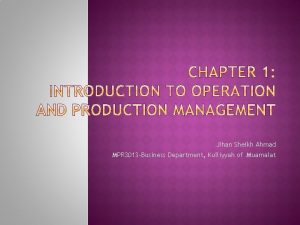Particle Size Analysis 1 KAUSAR AHMAD KULLIYYAH OF



























- Slides: 27

Particle Size Analysis 1 KAUSAR AHMAD KULLIYYAH OF PHARMACY http: //staff. iiu. edu. my/akausar PHM 3133 Dosage Design 1 2010/11

Contents 2 �Types of methods �Factors influencing selection of methods PHM 3133 Dosage Design 1 2010/11

Fundamental knowledge 3 molecules become particles become granules PHM 3133 Dosage Design 1 2010/11 become tablets etc

Process requirements 4 From crystallization to formulation �formation of particles �drying �granulation �mixing compression �dissolution Specific operations dehydration/impregnation, spherical crystallization and the series of operations involved in microencapsulation. PHM 3133 Dosage Design 1 2010/11

Examples of particle-related advances 5 � use of cholesteric liquid crystals and custom microencapsulation technologies in the personal care industry… www. hallcrest. com/about � microencapsulation technology to deliver omega-3 oils and other ingredients into functional foods. . www. ocean-nutrition. com/inside. asp? cm. Page. ID PHM 3133 Dosage Design 1 2010/11

6 http: //www. swri. org/3 pubs/brochure/d 01/microen. htm PHM 3133 Dosage Design 1 2010/11

Interactions between materials and processes 7 � Influenced by particle size � Need to choose correct scale of observation e. g. right sizing method appropriate parameters e. g. right aperture, lens, medium right measurements e. g. calibrated, good quality standards Ø to prepare the right material for the expected function PHM 3133 Dosage Design 1 2010/11

Example 8 � After size reduction, lots of fines were generated because of bad process condition. � To separate fines from product, a series of cyclones were used. � Eventually, the fines must be trapped using a dust filter. � WHAT IS THE SPECIFICATION of the filter cloth? PHM 3133 Dosage Design 1 2010/11

How to determine spec of cloth? 9 � Filter cloth is used to trap dust � Pore size of cloth must be smaller than dust Ø Hence, must know size of fines!! Ø To control processes IN manufacturing, need to know size of raw materials, in-process materials and finished goods. PHM 3133 Dosage Design 1 2010/11

Size distribution of products & fines 10 � How to detect the size of a sample that contains Products? ………………. normal distribution Fines? . . normal distribution Products + fines? . . . SKEWED PHM 3133 Dosage Design 1 2010/11

What method to choose? 11 Can sieving be used? Must consider screen size…. Coulter counter? Size range for a particular aperture? Microscopy? Magnification? Limitation? PHM 3133 Dosage Design 1 2010/11

Sample with wide size distribution 12 � Not desirable as a product Rate of dissolution differs Processing problem �Fines tend to agglomerate �Fines may affect flow � Measurements must be carried out more than once Coulter counter - at least two apertures Exercise: how about laser diffraction? PHM 3133 Dosage Design 1 2010/11

What to analyse? 13 Powders Granules Liquids Emulsions Creams Suspensions/dispersions PHM 3133 Dosage Design 1 2010/11

Powder samples 14 � Flowability/dispersibility Poor if too fine. Why? Exercise: how to counter this problem when using Coulter? � Shape Crystalline – geometric shape Acicular – needle-shape Granular equidimensional irregular shape Spherical PHM 3133 Dosage Design 1 2010/11

Emulsion samples 15 � Will the size change upon dilution? Can you use Coulter principle to measure size of fine sugar? � Will there be changes in zeta potential that may affect stability? � Can the technique employed analyse neat sample? PHM 3133 Dosage Design 1 2010/11

Dimensions 16 � Diameter Most of the time not actual diameter BUT equivalent diameter Mean Mode � Size distribution Normal Skewed � Polydispersity � Particle shape � Statistics PHM 3133 Dosage Design 1 2010/11

Availability and cost 17 Cheap Sieves � Moderate Light microscopy Coulter counter Laser diffraction Sedimentation PHM 3133 Dosage Design 1 2010/11 Expensive Electron microscopy Light scattering Laser microscopy

Sieves 18 Suitable for: �Powder �Slurry �Dispersion �Right sieves with appropriate size interval PHM 3133 Dosage Design 1 2010/11

Laser diffraction 19 Suitable for: �Powder �Diluted liquid �Concentrated liquid? �Right lens and parameters e. g. density PHM 3133 Dosage Design 1 2010/11

Microscopy 20 �Almost all types of samples �Depends on type of microscopy �Depends on magnification �Sample preparation is important PHM 3133 Dosage Design 1 2010/11

Light microscope 21 Salicylic acid 10 X PHM 3133 Dosage Design 1 2010/11 Salicylic acid 40 X

Light microscope 22 O/W emulsion 10 X PHM 3133 Dosage Design 1 2010/11 O/W emulsion 40 X

Salicylic acid 100 X 23 coalescence PHM 3133 Dosage Design 1 2010/11

Selecting instrument 24 Need to consider: �allowable range of sizes �width & shape of the particle size distribution of sample PHM 3133 Dosage Design 1 2010/11

Sample Silica gel: 5 -300 um Granules: ave. 200 um Aspirin, grounded Technique 25 Light microscopy: mag? SEM: mag? TEM: mag? Eye cream Calamine-Zn. O lotion Polystyrene dispersion Sieves: size? Laser diffraction: lens? Viscosity Microemulsion of cod oil Colloidal sulfur Bentonite clay dispersion Photon correlation Coulter counter: aperture? Polarised light microscopy: mag? Surfactant Atomic Force Microscopy PHM 3133 Dosage Design 1 2010/11

Sizing technique for sulfur? 26 Hint: How many types of sulfur preparation available? PHM 3133 Dosage Design 1 2010/11

References 27 Aulton, M. E. (1988). Pharmaceutics: The Science of dosage form design. London: Churchill Livingstone. Llachman, L, Lieberman, H. A. and Kanig, J. L. (1986). The theory and practice of industrial pharmacy (3 rd ed. ). Philadelphia: Lea & Febiger. PHM 3133 Dosage Design 1 2010/11
 Kausar ahmad
Kausar ahmad Ahmad ibrahim kulliyyah of laws
Ahmad ibrahim kulliyyah of laws Sop sertu jakim
Sop sertu jakim Kulliyyah of pharmacy
Kulliyyah of pharmacy Kulliyyah of islamic revealed knowledge and human sciences
Kulliyyah of islamic revealed knowledge and human sciences Soil particle size classification
Soil particle size classification Coulter counter method
Coulter counter method Horiba particle size analyzer manual
Horiba particle size analyzer manual Const int size =18 string *tbl2
Const int size =18 string *tbl2 Size separation in pharmaceutical engineering
Size separation in pharmaceutical engineering Particle flow analysis
Particle flow analysis Ambroxol acetylcysteine combination
Ambroxol acetylcysteine combination Political services of sir syed ahmad khan
Political services of sir syed ahmad khan Phuc dao
Phuc dao Pneumonia severity index
Pneumonia severity index Jawad ahmad md
Jawad ahmad md Nur ahmad husin
Nur ahmad husin Ahmad israiwa
Ahmad israiwa Mutilomania
Mutilomania Advantages of filtration
Advantages of filtration Dr nur ahmad tabri
Dr nur ahmad tabri Nur ahmad husin
Nur ahmad husin Nur ahmad husin
Nur ahmad husin Ahmad ibrahim primary school teachers
Ahmad ibrahim primary school teachers Ahmad boestamam sejarah tingkatan 4
Ahmad boestamam sejarah tingkatan 4 Tahun pergerakan pengakap sedunia ditubuhkan
Tahun pergerakan pengakap sedunia ditubuhkan Yamin ahmad
Yamin ahmad Hadi ahmad md
Hadi ahmad md
